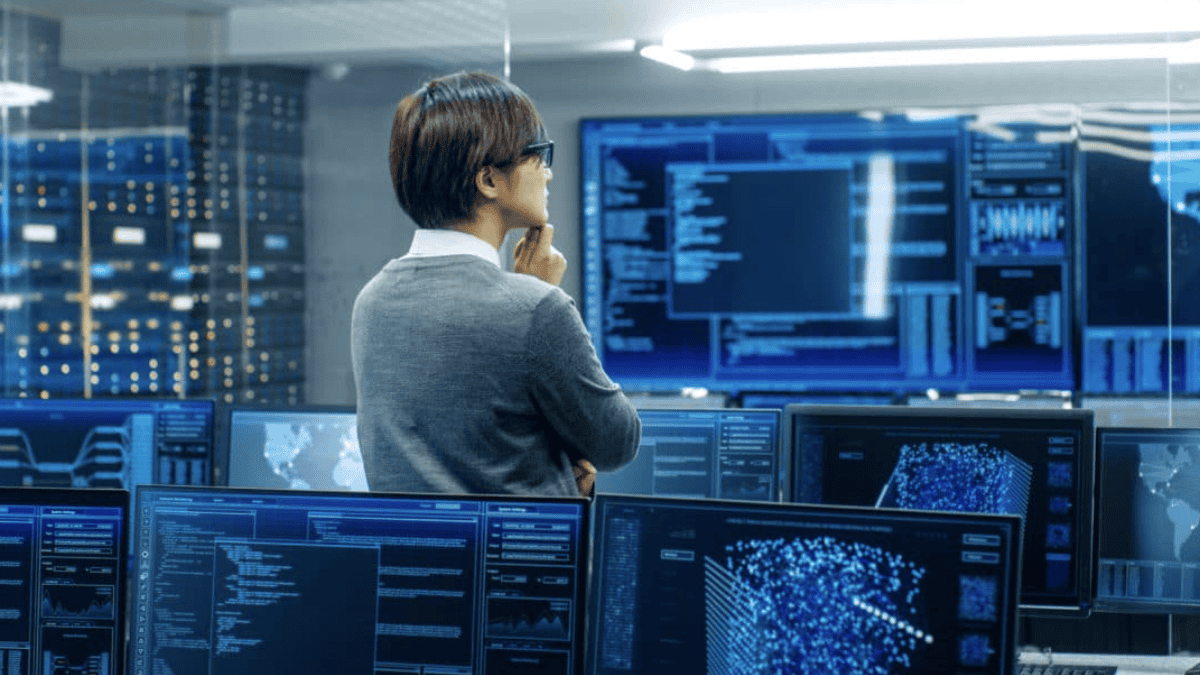Effective IT Support can be a significant asset for small and medium enterprises (SMEs). Providing timely and efficient technical assistance is crucial for maintaining productivity and ensuring that operations run smoothly with IT support.
First-Line Support Explained
First-line support serves as the initial point of contact for users encountering IT issues. This level of support plays a crucial role in addressing basic problems and providing quick resolutions.
Responsibilities and Scope
The primary responsibility of first-line support is to manage user inquiries and provide immediate assistance. Their scope typically includes troubleshooting, problem resolution, and guiding users through standard procedures. Some specific duties may include:
- Providing technical assistance via phone, email, or chat
- Conducting basic diagnostics to understand user issues
- Logging issues for future reference and reporting
- Offering guidance on software and hardware usage
- Escalating complex problems to second-line support when necessary
5 Common Issues Handled
First-line support addresses a variety of common issues encountered by users. These may include:
- Password resets
- Software installation and setup
- Network connectivity issues
- Hardware malfunctions
- Printing issues
5 Qualifications and Skills
First-line support personnel require a specific set of qualifications and skills to effectively assist users. Essential skills include:
- Strong communication skills to explain complex technical information
- Basic knowledge of IT systems and software
- Problem-solving abilities to address user concerns quickly
- Customer service orientation to support a positive user experience
- Familiarity with ticketing systems for issue tracking
First-line support serves as the backbone of IT assistance, addressing immediate user needs and facilitating a smooth operation within organizations.

Second-Line Support Explained
Second-line support plays a crucial role in the IT support structure, particularly for small and medium-sized enterprises (SMEs). This level of support is designed to address more complex issues that require specialized knowledge and skills beyond the capabilities of first-line support.
Role and Scope of Second-Line Support
The primary role of second-line support is to manage escalated issues from first-line support representatives. When a problem cannot be resolved by first-line technicians, it is forwarded to second-line support for further investigation. This team often has access to more advanced tools and resources, allowing them to tackle intricate technical problems effectively.
Second-line support also engages in proactive system monitoring and maintenance, ensuring that systems are running smoothly and potential issues are addressed before they escalate.
4 Differences from First-Line Support
There are several distinct differences between first-line and second-line support that reflect their unique responsibilities and approaches:
| Aspect | First-Line Support | Second-Line Support |
| Complexity of Issues | Handles routine, common problems | Manages complex, technical issues |
| Skill Level | Basic troubleshooting skills | Advanced technical knowledge and expertise |
| Interaction Frequency | Frequent interactions with end-users | Limited interactions, usually via escalations |
| Access to Tools | Basic tools for troubleshooting | Advanced tools and diagnostic capabilities |
Specialized Expertise and Solutions
Second-line support is characterized by its specialized knowledge in various IT areas. Team members often have technical backgrounds in specific software, hardware, and network systems. This expertise enables them to provide tailored solutions that address unique challenges within an organization.
Common areas of specialization within second-line support may include:
| Specialization Area | Description |
| Software Support | Expertise in specific applications and their configurations |
| Network Management | Knowledge of network protocols and infrastructure |
| Security Solutions | Focus on cybersecurity and risk management |
Leveraging their specialized knowledge, second-line support teams can provide in-depth assistance and ensure that complex issues are resolved efficiently. This enhances overall IT operations and contributes to a more streamlined support experience for users.
Collaboration Between Support Levels
Effective collaboration between first-line and second-line support is essential for delivering high-quality IT services. The interaction between these two levels ensures that issues are resolved efficiently and clients receive the support they need.
Communication and Information Sharing
Clear communication between first-line and second-line support teams facilitates an effective workflow. Regular information sharing helps maintain a consistent approach to problem-solving and improves overall service delivery.
| Communication Method | Purpose |
| Regular Meetings | Discuss common issues and solutions |
| Shared Documentation | Provide access to accounts of previous cases |
| Ticketing Systems | Track issues, updates, and resolutions |
Escalation Procedures
Establishing proper escalation procedures helps streamline the transition of tickets from first-line to second-line support. This ensures that complex issues are addressed appropriately and clients experience minimal downtime.
| Escalation Criteria | Description |
| Complexity of Issue | Issues beyond the first-line capabilities are sent to second-line |
| Client Impact | High-impact problems affecting business operations are prioritized |
| Time Elapsed | Tickets unresolved within a certain timeframe are escalated |
Continuous Improvement
Continuous improvement is vital for enhancing the effectiveness of both support levels. Regular reviews and feedback mechanisms allow teams to identify areas for improvement, share best practices, and implement training as necessary.
| Improvement Method | Description |
| Post-Mortem Reviews | Analyze resolved issues to identify improvement points |
| Training Sessions | Provide ongoing education on new technologies and procedures |
| Feedback Collection | Gather input from team members to refine processes |
Collaboration between first-line and second-line support is crucial for the success of IT operations within SMEs. By fostering strong communication, establishing effective escalation procedures, and focusing on continuous improvement, organizations can better meet their IT support needs.

Choosing the Right Support Level
Selecting the appropriate support level is crucial for small and medium enterprises (SMEs) when seeking IT assistance. This decision involves understanding various factors specific to the organization's needs and how each support level can fit into their operational framework.
4 Factors to Consider
Evaluating whether to utilize first-line or second-line support requires considering several factors:
| Factor | Description |
| Volume of IT Issues | Assessing the frequency and complexity of IT issues is vital. High volumes may require robust support systems. |
| Expertise Required | Determining the level of technical expertise needed for the support tasks can guide the choice of support level. |
| Budget Constraints | Evaluating financial resources available for IT support influences the selection between the two support levels. |
| Business Criticality | Understanding how critical the IT systems are to daily operations helps in deciding on immediate support versus specialized support. |
Tailoring Support to Business Needs
SMEs must align their support systems with their specific business requirements. This alignment can ensure that the chosen support level effectively addresses unique challenges:
| Business Need | Recommended Support Level |
| High-Volume Issues | First-Line Support — allows quick resolution of common issues, enhancing user satisfaction. |
| Complex Technical Problems | Second-Line Support — provides deeper technical knowledge for resolving intricate issues. |
| Limited Budget | First-Line Support — optimal for addressing simple queries and routine tasks without significant investment. |
| Growing Business Needs | Combination of Support Levels — integrating both levels can offer a comprehensive support framework as the business scales. |
3 Case Studies and Examples
Examining real-life scenarios can provide insights into how organizations successfully implement their support strategies:
| Case Study | Scenario Description | Outcome |
| Tech Startup | A startup faced numerous software-related inquiries impacting productivity. | They established a strong first-line support team which effectively managed routine concerns, allowing second-line support to focus on development issues. |
| Retail Business | A retail company encountered frequent payment system outages affecting sales. | They relied heavily on second-line support for quick resolution, leading to reduced downtime and improved customer satisfaction. |
| Manufacturing Firm | A manufacturing firm needed immediate support during production hours. | They adopted a hybrid approach, utilizing first-line support for daily issues while keeping second-line support available for more complicated systems. |
Boost Your Business Efficiency with LK Tech
Considering these factors, tailoring the support systems to their needs, and learning from examples, SMEs can make informed decisions when choosing between first-line and second-line support. At LK Tech, we provide top-notch IT support tailored to your unique needs, ensuring seamless operations and quick issue resolution. Whether you need immediate troubleshooting or in-depth technical expertise, our team is ready to assist. If you're looking for a reliable IT company in Cincinnati, don’t hesitate to reach out to us today and experience expert support that keeps your business running smoothly.


